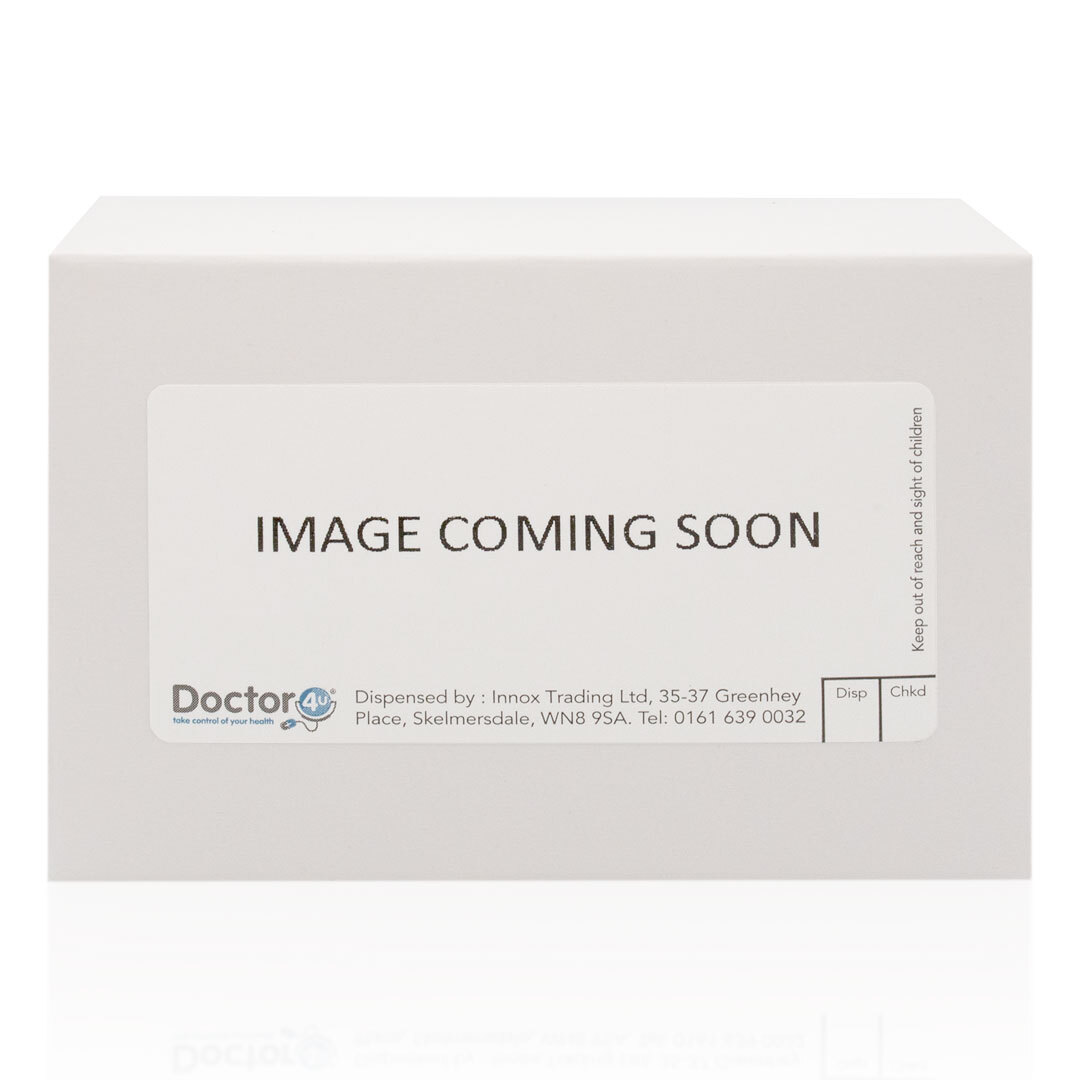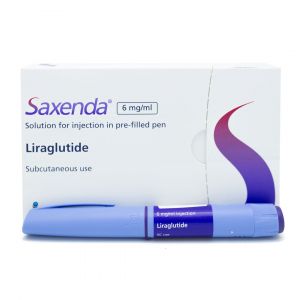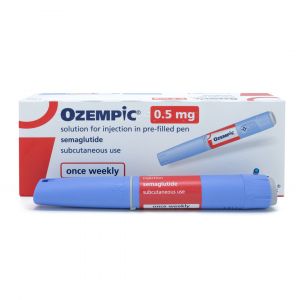Weight loss injections are a relatively new introduction to anti-obesity medicines, but they’re already helping thousands of patients worldwide that previously struggled with weight loss.
Injections are a new alternative to oral route medicines, and despite only being in the UK since 2017, they’ve proven to be a popular and effective treatment with many obese patients.
As with other anti-obesity treatments, weight loss injections don’t just work by magic, and should be used alongside a healthy diet and exercise for best results, with most of those in clinical trials losing at least 5% of their initial starting weight whilst using liraglutide injections (Saxenda).
Weight loss injections generally work differently to other anti-obesity medicines such as Orlistat, as you still digest all of the food that you eat. However, when using the injections, you should notice that your appetite is reduced, meaning that you consume less food and therefore fewer calories, usually resulting in weight loss.
Weight Loss Injections
Weight loss injections are a relatively new introduction to anti-obesity medicines, but they’re already helping thousands of patients worldwide that previously struggled with weight loss.
Injections are a new alternative to oral route medicines, and despite only being in the UK since 2017, they’ve proven to be a popular and effective treatment with many obese patients.
As with other anti-obesity treatments, weight loss injections don’t just work by magic, and should be used alongside a healthy diet and exercise for best results, with most of those in clinical trials losing at least 5% of their initial starting weight whilst using liraglutide injections (Saxenda).
Weight loss injections generally work differently to other anti-obesity medicines such as Orlistat, as you still digest all of the food that you eat. However, when using the injections, you should notice that your appetite is reduced, meaning that you consume less food and therefore fewer calories, usually resulting in weight loss.
What sorts of different weight loss injections exist?
At the moment, only one type of injection is licenced to treat obesity in the UK – Saxenda (liraglutide). Saxenda was introduced as a new medicine to the UK in 2017, and contains the active drug liraglutide. Liraglutide is also used to treat type 2 diabetes under the name Victoza, but after going through clinical trials, it was released again as Saxenda with a licence to treat obesity.
Whilst Saxenda is the only licenced weight loss injection, there is another option that can be prescribed off-label – Semaglutide weekly injections (Ozempic). Ozempic is the brand name of another drug that’s used to tread type 2 diabetes, but like liraglutide, it’s currently going through trials with a view to being released again for weight loss. Current results from clinical trials show that semaglutide is more effective than Saxenda, and works in a very similar way.
Although semgalutide weekly injections aren’t licenced to treat obesity, they can be prescribed off-label for weight loss if the prescribing doctor thinks that it’s suitable for the patient. This means that a medicine is being used for something other than what it’s indicated for. It’s completely safe and legal, and a doctor will only prescribe a medicine to you if they think if will help with your condition.
How do weight loss injections work?
Weight loss injections work by reducing your appetite, meaning that you eat smaller portions and fewer calories than what you’d normally consume, but how exactly do they work in your body?
When you’ve eaten, your body naturally produces an appetite hormone that helps to regulate hunger. After you’ve had food, the appetite hormone tells your body that you’ve eaten and that you’re satisfied. However, this naturally-produced hormone only lasts for a short while.
Weight loss injections mimic this appetite hormone, but they last for much longer than that body’s naturally produced version, often for several hours (or days, in the case of semaglutide). This means that you feel fuller for longer after meals, meaning that you eat smaller portions. As you’ll feel more satisfied after meals, you should also notice a reduction in snacking, also helping to reduce the amount of calories that you’d normally eat.
By reducing the amount of food that you eat, your calorie intake will reduce and you should start to lose weight.
Weight loss injections should be used alongside a healthy diet and exercise. If you’ve already been eating healthily before starting treatment, you should only notice a reduction in appetite rather than feeling like you’re restricting certain foods from your diet.
Where do you inject yourself?
Both of the weight loss injections mentioned are subcutaneous, meaning that they should be administered under the skin, and not into a vein or muscle. Because of the type of injections that Saxenda and Ozempic are, it’s generally recommended that you inject yourself in one of the following areas:
- Lower abdomen (around the waistline or below)
- Front of thigh
- Outer-upper arm
These areas are generally recommended due to having ideal amounts of fatty tissue for subcutaneous injections. The reason for this is that the medicine needs to be absorbed slowly and steadily, rather than quickly as with some intravenous injections.
The needles that come with the weight loss injections are usually fairly short to avoid penetrating a muscle, but if you’re still nervous about this, the safest area is probably the lower-abdominal area.
You should change the spot where you inject to make sure that you don’t experience any adverse effects or bruising, and to make this easier, it’s a good idea to have your most recent injection site written down somewhere so you know not to inject there again for a while.
Detailed instructions on how to inject yourself are outlined in the patient information leaflet for each weight loss injection, but you can always ask your local pharmacist or practice nurse to show you how to do it for the first time if you’re nervous.
Do you need a prescription for slimming injections?
Yes, you will always need a prescription for weight loss or slimming injections such as the ones we’ve already mentioned. If you’re offered these injections without a prescription or consultation, this is illegal and you should report the seller to the MHRA.
Obtaining a prescription for weight loss injections doesn’t always mean that you need to visit your doctor. In fact, Saxenda is limited on the NHS, and Ozempic is only prescribed to those with type 2 diabetes, so it’s highly likely that you’d need to source a prescription privately anyway.
Doctor4U uses GMC-registered prescribing doctors that can provide a prescription for Saxenda or Ozempic for weight loss if they feel that it’s a suitable treatment for you. To do this, you must complete an online consultation for weight loss first, answering all questions honestly and truthfully before selecting one of the weight loss injections from the list presented to you. Once one of our doctors has seen your request, they will decide whether or not your chosen treatment is suitable for you. If it is, an electronic prescription will be generated and sent to our dispensing pharmacy where it will be sent to you.
Weight Loss Injection Side Effects
It’s important to remember that weight loss injections are prescription medicines, and can often come with side effects. Whilst not everybody experiences these, they’re important to know about. Individual side effects for each injection are explained in the patient information leaflet, but the main side effects that both weight loss injections share include:
- Feeling sick
- Vomiting
- Diarrhoea or constipation
- GI problems, for example: indigestion, gastritis. stomach discomfort, upper stomach pain, heartburn, bloating, wind, belching and dry mouth.
- Feeling weak or tired
- Changed sense of taste
- Dizziness
- Difficulty sleeping (insomnia) - this usually occurs in the first 3 months of treatment
- Gallstones
- Injection site reactions (such as bruising, pain, irritation, itching and rash)
- Low blood sugar (hypoglycaemia) - the warning signs of low blood sugar may come on suddenly and can include: cold sweat, cool pale skin, headache, fast heartbeat, feeling sick, feeling very hungry, changes in vision, feeling sleepy, feeling weak, being nervous, being anxious, confusion, difficulty concentrating and shaking.
For advice on how to cope with these side effects if you experience them, please click here to read our article about weight loss injection side effects.
Who Are Weight Loss Jabs Suitable for?
Weight loss injections are for overweight people that have a BMI of over 30, or over 27 with a weight-related health problem. Weight loss injections should only be considered if diet and exercise
alone haven’t been effective at helping you to lose weight, or if you’ve reached a plateau with your weight loss.
Even then, they aren’t suitable for everyone. For example, if you’re diabetic and already taking a similar medicine, weight loss injections probably won’t be the right avenue of treatment for you as they work in such a similar way that they could interact.
Weight loss injections such as the ones we’ve already mentioned should also not be used if you already take warfarin (or any other blood-thinning medicines), no matter what your BMI is. This is because it can cause potentially dangerous interactions.
If you’ve previously taken one type of weight loss injection and had an allergic reaction to it, similar types also won’t be suitable for you due to the way that they work in your body.
However, if you’re struggling to lose weight and can’t use slimming injections, you should make an appointment with your doctor to see what other options are available to you.

















